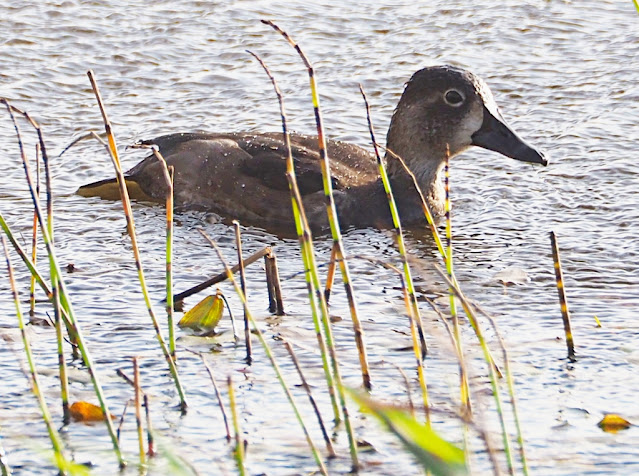I went for my Covid and Flu jags on Tuesday, so felt fairly rubbish on Wednesday and didn't do much, bit of a walk at Stromness, failed to find the Kingfisher, did find some Coleophora larvae and took a sample, promptly lost it whilst beginning the dissection, it vapourised, somehow; darn!
Today has been spent in front of the computer trying to sort out some records. Cleaning my own data and raising questions about other records (huge thanks to SS for lots of assistance). The questions arise from information in the new Pyralid and Crambid Moths book. I've had the book for a few days now, and what a fabulous achievement it is. Apparently, it has taken the best part of 15 years from beginning writing it to publication and initial distribution. Well done to Mark P, Sean, Mark T and everyone else involved. If you're interested in moths don't hesitate, just get a copy - https://www.atroposbooks.co.uk/pyralid-and-crambid-moths-of-britain-and-ireland - still with £15 off.
 |
Ok, so I used to go birding with Sean quite a bit, and I've got a great story that he won't like about crashing his (Dad's?) car on the way to Dunge one time, and the very cool woman whose car he'd just back-ended, "Do you always stop like that?" (Sorry SC.)
|
The questions raised are around a couple of species of Eudonia, if you have the book you can see question marks over Orkney for E. lineola and E. alpina. I've just scrubbed my two E. alpina records having gone back to my photos (all kept by date).
 |
Eudonia angustea.
|
Eudonia alpina occurs early, from May to July, and not into August, and is larger, usually, than E. angustea. I haven't found Sterling and Parsons that helpful for this species, comparing photos with the illustrations, although to be fair if I'd read the text more carefully... (and listened to MP) I might have done better. Anyway, remedied now.
I fared a tad better with the Cattle Egret than with the Kingfisher. We had another look for it and got distant but acceptable views.
 |
Cattle Egret, 2nd Orkney record, thanks to MT for relocating it.
|
I also managed to see my first definite Orkney Barn Owl, which was in the area of where I've had a few possibles from the car, at night, over the years. It was a very white one, so likely from Scotland and not Europe.
Up to seven Brambling have been in the garden with three Chaffinch, a couple of Greenfinch and six Goldfinch, so perhaps our variety of feeding birds is returning, the last few months it's been very thin.
 |
Brambling, male.
|
 |
Brambling, female.
|
 |
Chaffinch, male.
|
 |
| Goldfinch. |
On the birding front, a bit of a disaster, I took the scope out of my rucksack to use it the other day and it was a bit knackered.
 |
Nikon ED 50 Fieldscope, a bit unwell.
|
It got that dent a few years back, I guess that had compromised the airtightness of it. I'd been out in the rain and hadn't opened the sack, so humidity had got in I suppose. Fortunately I still have the very old but faithful Zeiss, but it's not nearly as easy to carry as the Nikon. It will shortly be on the road, to the Nikon Repair Service.
Currently, there are apples on sticks front and back, and a feasible Waxwing was heard going over the other afternoon. It's been a while since we've had them in the garden.
I was sent a few moths to dissect to confirm the ID. I chickened out with an Elasticha, rather rare and small, so I passed that on to more expert hands (thanks MY). However, I did tackle a Depressaria which turned out to be D. sordiditella. Second county record I think so a nice one.
 |
Depressaria sordiditella, male. (Thanks to MY for confirming.)
|
Dissection of a pug was interesting. Their genitalia are pretty much as hard to unpick as are the whole moths. However, I got it to Common Pug in the end.
The moth traps also did some business with a couple of Mottled Umber, two more Red-line Quaker and a late Rosy Rustic.
 |
Mottled Umber, males.
|
 |
Red-line Quaker again, I'm having a record year for those.
|
Mottled Umber is approaching favourite moth status, perhaps something to do with that weird face you can see on the thorax.
It is really blowing tonight, it's doing that thumping thing it does in the gusts and it's due to continue all night and into tomorrow with heavy rain as the supporting cast. Coming from the east, so maybe there'll be some interesting birds in its wake. There might be some interesting moths too, the traps will be out as soon as possible after it has done with its weather.
 |
Hoy High (it's actually on Graemsay) from the Stromness shore.
|





















































